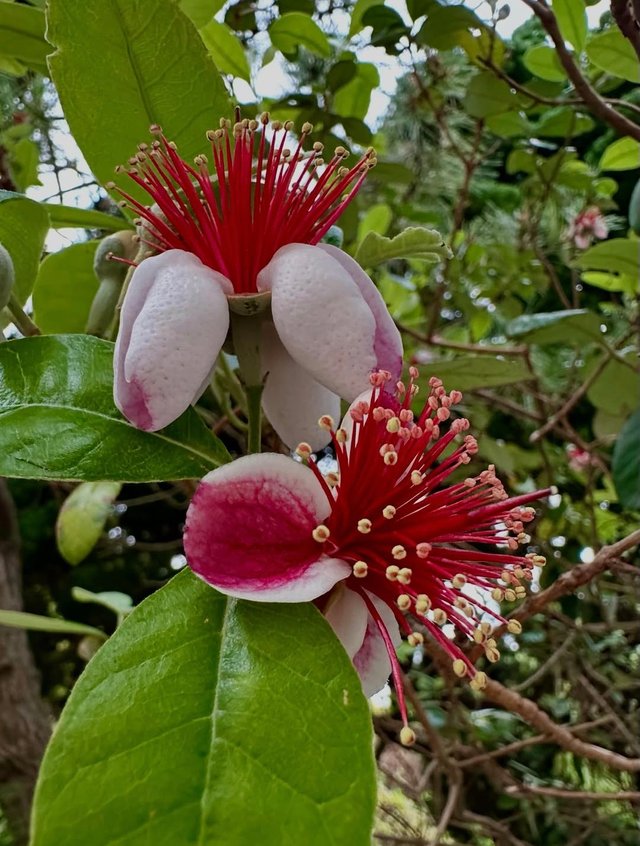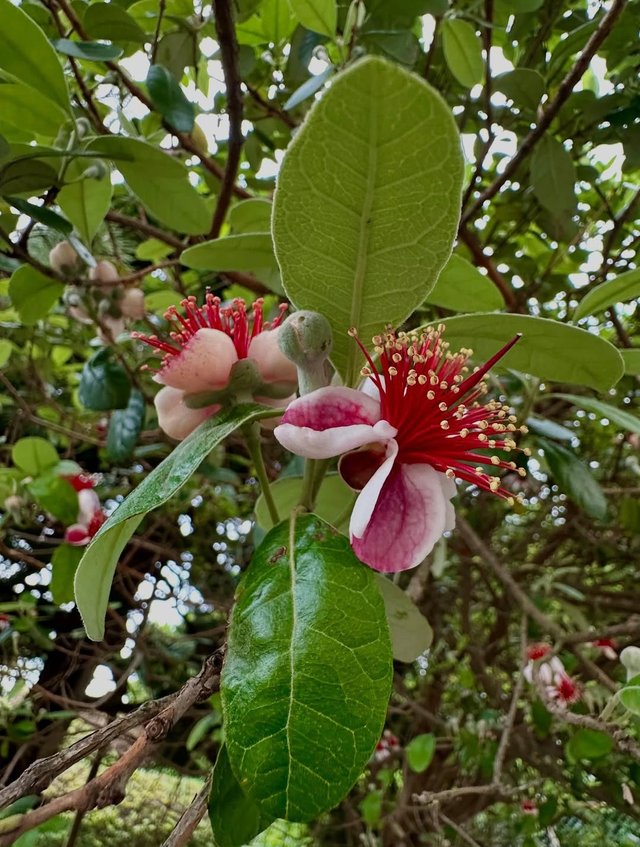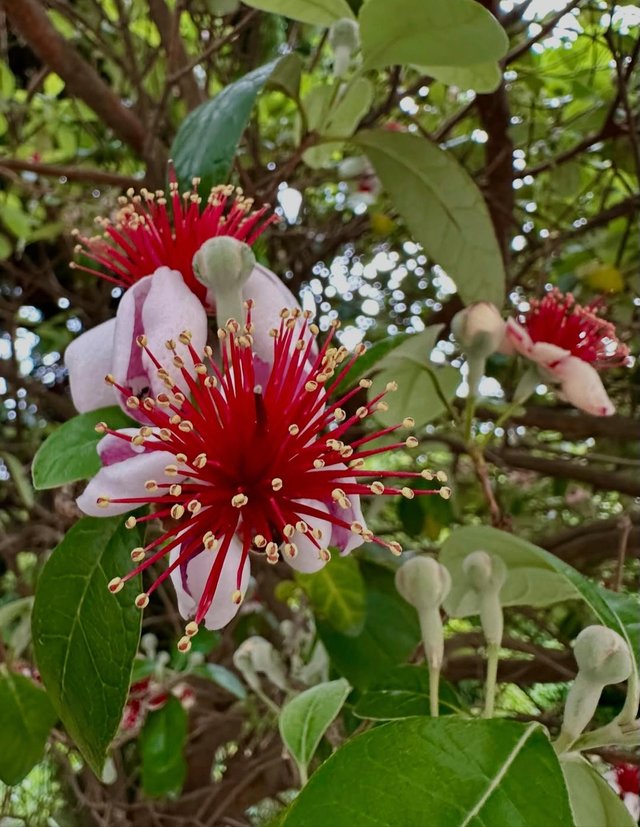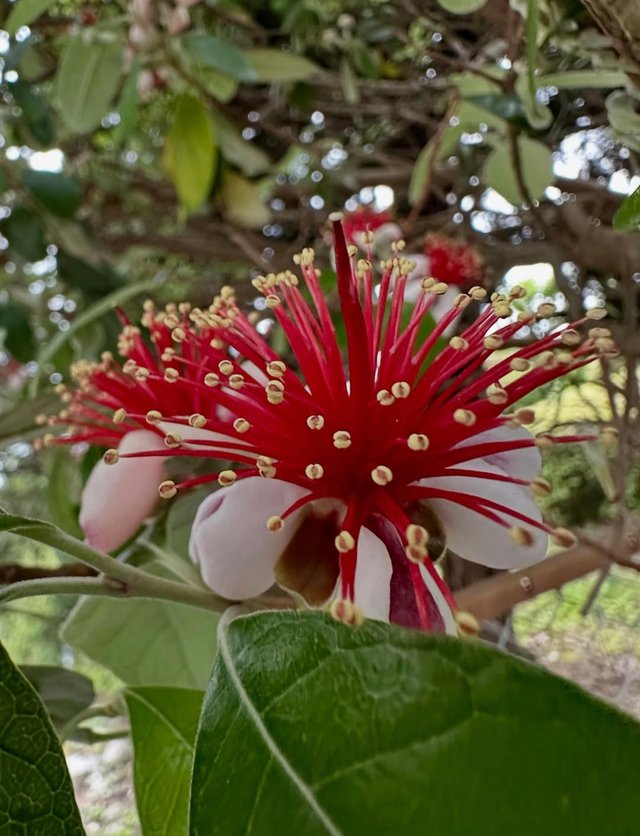Feijoa Flower
The feijoa flower is one of nature’s best-kept secrets — a breathtaking display of beauty, resilience, and flavor. While the plant is better known for its unique, tangy fruit, the flower itself deserves a spotlight of its own.Feijoa flowers are an absolute feast for the eyes. They bloom in late spring to early summer, unveiling a dramatic combination of waxy white petals with a blush of soft pink on their undersides. The centerpiece? A dramatic explosion of long, crimson-red stamens, tipped with golden anthers, giving the flower an almost fireworks-like appearance.
These flowers don’t just look good; they create a dreamy contrast against the plant’s silver-green foliage, making the shrub a stunning ornamental feature in any garden or edible landscape.Feijoa petals are edible — and not just edible, but delicious. Sweet, crisp, and slightly floral with a hint of cinnamon, they can be picked gently without harming the fruit development.
Feijoa flowers are not just for human admiration — bees, birds, and other pollinators adore them. In particular, native birds like hummingbirds (in suitable climates) and some parrots are known to feed on the sweet petals and assist in pollination. For gardeners aiming to increase biodiversity and attract beneficial species, planting a feijoa bush is a wise move.Feijoa plants are hardy, drought-tolerant once established, and thrive in a range of conditions — from temperate coastal gardens to inland dry climates. The flowers usually begin to bloom 2-3 years after planting.



